The Lingering Questions of CS:GO’s Online Purgatory
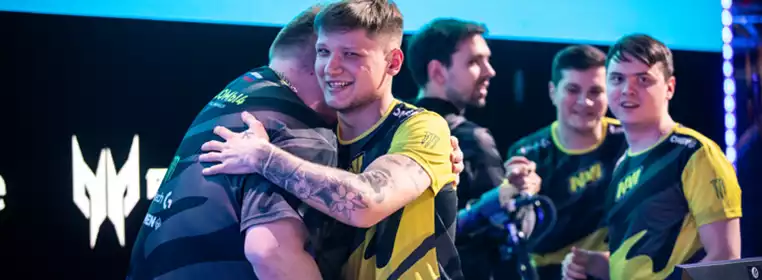
The CS:GO ESL Pro League Season 11 and Flashpoint season 1 has ended. Fnatic won EPL EU 11 over Mouz 3-2, Liquid smashed EG 3-0 (with 1 default win), and MIBR got second at Flashpoint. While these competitions were online, given the circumstances we need to take these with a higher degree of seriousness. This situation has put many of the teams into a strange online purgatory as they have questions that can’t be fully answered by the results they accrued online.
The Circumstances of Online Play
Before we dive into the circumstances of online play, we need to lay out what was lost in the transition from LAN to online play. CS:GO had the best LAN circuit of any major esports game as it had the most LAN tournaments of varying size and competition across the globe. These LAN tournaments generally finished within 1-2 weeks and after attending 2-3 LANs, a lineup had a good set of live games to figure out how they fared against the entire field of play and where the potential problems could be. Potential problems included: skill, team play, tactics, strategy, map pools deficiency, consistency, pressure, and interpersonal problems.
The constant LAN circuit meant lineups could figure out these kinks and problems quickly. If the team had a good central leader, they could make adjustments or make the changes necessary to make the team better. One of the more recent examples is Finn “karrigan” Andersen’s Mouz squad. The team was rising up through most of 2019, but hit a barrier in October. Through the LAN tournaments, karrigan used that data and made small adjustments that pushed Mouz from a top 10 team into a consistent title contender. He had Chris “chrisJ” de Jong and David “frozen” Cernansky swap roles so chrisJ became the hard entry and frozen became the secondary lurker. He also changed seating position and had Ozgur “woxic” Eker sit in the middle of the group. This improved communication on the team as it mirrored their general CT-side setups.
The transition to LAN play destroys any chance for teams to make that kind of adjustment as players aren’t sitting next to each other, they are sitting at home. In addition, the online environment diminishes the firepower and experience differences between players and teams. The ping can vary between players and makes firepower more inconsistent online. Nicolai “dev1ce” Reedtz even tweeted something to this effect:
The experience differential is even bigger. The feel of a LAN event is different. Players travel outside of their countries and away from their comfort zone. They have to go through media day, practising, travel, and a litany of small things that have an effect on their play. The pressure of big LAN playoffs is hard to quantify or convey perfectly, but it is something tangible that I’ve seen iterated across all competitions.
- Read More - The Viability of 6-Man Rosters in CSGO
If I had to describe why I think there are two reasons. First, most beginning players became great under a completely different setting from a LAN playoff stage. All of them started playing in the comfort of their homes. Once you take a player outside of the comfort of their homes, they lose a percentage of their concentration and potential peak performance.
The bigger reason is that LAN playoffs are critical tests in a player’s career. Players have spent years honing their craft for this moment and now that it is in front of them, they face one of two outcomes: win and prove their worth to themselves, or lose and question and face the terrible feeling of knowing that they weren’t good enough.
In this existential moment, the players who come out on top are usually the ones who have the most experience. They know how to deal with those pressure situations or even how to excel under them. The most memorable example I can think of is Park “July” Sung Joon.
In SC2, I remember GomTV ran a promo before the July and Jang “MC” Min Chul finals. While I can’t find it now, I remember distinctly July saying that he always ate the exact same thing every time before a big final so that he could recreate the atmosphere he had headed into a final. Another example from July’s career was his finals against Doh “BeSt” Jae Wook in the 2008 EVER OSL. In that final, July pulled a drone drill all-in that broke BeSt’s mind. July won the series 3-0 and won the Golden Mouse that day. In the post-game interview he said that in a bo5 series, the mind was more important than skill. July used his experience and will to break BeSt’s focus to win the finals.
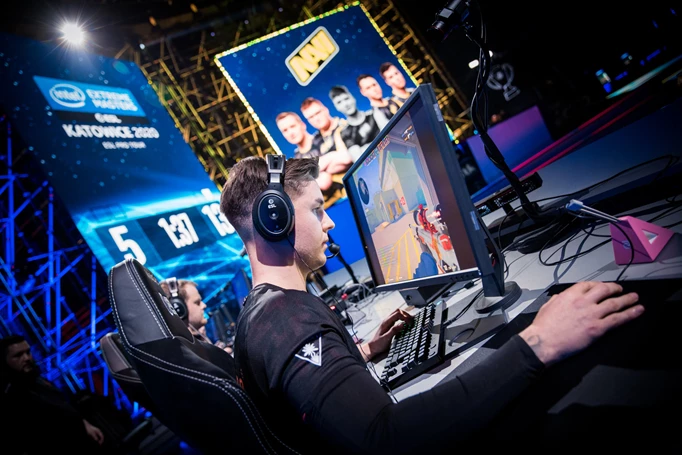
 Click to enlarge
Click to enlargeA Change in Tournament Format
A third factor to consider is the change in format. Tournament organizers had phased out the long-drawn-out group stages in the last few years. Once the competition went online, TOs have started to use larger round-robin group stages.
We can contrast between EPL Season 10 and EPL Season 11 for the EU region. In EPL Season 10, teams played a four-team round-robin group stage across two days. In that environment, they could focus on their three opponents in their group. The EPL 10 Finals had teams seeded into two different double elimination brackets of 8 man groups and the surviving teams played in a 6 team playoff bracket.
In EPL EU Season 11, the first stage was six-team round-robin group stages stretched across 8 days. The second phase had another 6 team round-robin phase played across 5 days. The playoffs were a 3 team bracket that ran for two days.
The amount of bo3s played isn’t too different. At EPL 10, a team played 3 bo3s in the regional stage and if they made it to the finals, they could play somewhere between 5-7 more additional bo3s.
- Read More - G2 Have One of the Best Systems in CS:GO
However what has changed is group size, length of time and amount of opponents a team gets to the final 6 teams. The larger groups could make it potentially harder to prepare even with the extra time allotted between each match. Mathematically speaking, most teams have a 5-7 map pool, so each additional team that comes into a group adds another 7 maps per team that needs to be scouted. For fastidious teams like Astralis, that can hurt their focus and scouting preparation as they were a team that was already skipping LANs so that they could reinvent themselves tactically and find ways of anti-stratting other teams.
That may not apply so much to the first group stage as there are much larger skill gaps between the teams, but I think it’s particularly relevant in the second group phase. All six teams in the second round robin were squads that no one could take lightly. So when Astralis played out their second group phase, they couldn’t use one of their biggest weapons, which is making specifically curated plans and tactics for each opponent. This is a game-changer, especially for a team as tactically powerful as Astralis is.
It is worth mentioning that not all tournaments are like this. DreamHack Masters and BLAST are using formats similar to their LANs, but tournaments like EPL 11 and ESL One: Road to Rio are fundamentally different from the ESL Lans of 2019. This change in format is something we need to keep in mind when evaluating teams as I assume (perhaps incorrectly) that once the LAN circuit starts again, they’ll revert back to the previous tournament formats.
The difference between LAN play and online play and the changes in format are all critical factors in understanding the lingering questions that teams have to face in CS:GO’s online purgatory. For this particular article, I’ve narrowed down the scope to the four teams that seem to be most affected by the purgatory: Liquid, MIBR, Astralis, and Na`Vi.
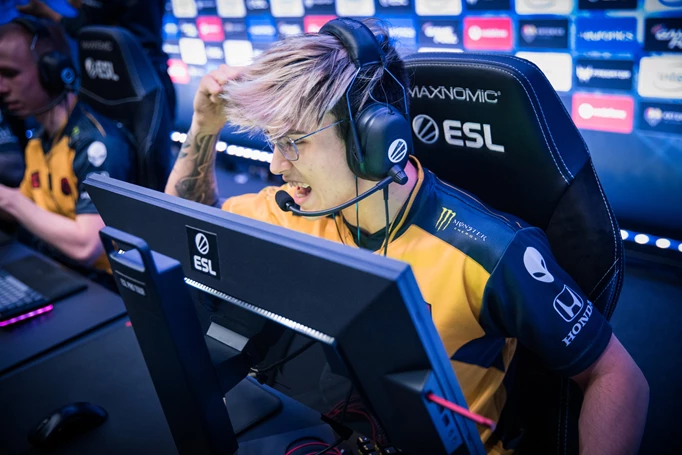
 Click to enlarge
Click to enlargeHow does Liquid fare against the elite anyway?
The move to online CS also split the regions apart as it was the only way to keep ping variance to a minimum. This has increased the ambiguity for the top NA teams as they have less chance to fight against the elite EU opposition to find out where they are in the world rankings. Two of the NA teams stuck in this online purgatory are Liquid and MIBR, albeit for different reasons. First, let’s go over Liquid’s case.
Liquid won EPL 11 NA but no one in the field could challenge them. EG was the second-best team in the region but Liquid beat them 3-0 with Nicholas “nitr0” Canella having to deal with a tornado. The LAN results prior to the transition don’t tell us much either. Liquid got top 6 at IEM Katowice and dropped two series to the two eventual finalists: G2 and Na`Vi. Overall, Liquid are slowly in decline but without more LAN events it’s hard to know what they need to change or improve on.
For instance, Astralis have consistently exploited Liquid’s playstyle and know how to isolate and nullify players like Russel “Twistzz” Van Dulken whenever they meet. However, we don’t know how Liquid’s playstyle works against the other top teams in the world. IEM Katowice was G2’s breakout performance so we don’t know how Liquid would fare in a rematch. Na'Vi won the quarterfinals at Katowice, but outside of that victory, Liquid have won every other head-to-head against every previous incarnation of Na`Vi in the past few years. They’ve gone even with Fnatic in series, losing at EPL 10 Finals, but beating them at ECS Season 8. Liquid still hasn't played Mouz on LAN so we don’t know how that matchup works out.
What we know for certain though is that the team itself has failed to reach the same heights it had in Summer 2019 and given the amount of talent it has, best in the world should be the goal. As that’s the case, something needs to change, but no one knows what. As that’s the case, perhaps Liquid’s plan is to hold fast until the Major and then figure things out if the LAN circuit comes back.
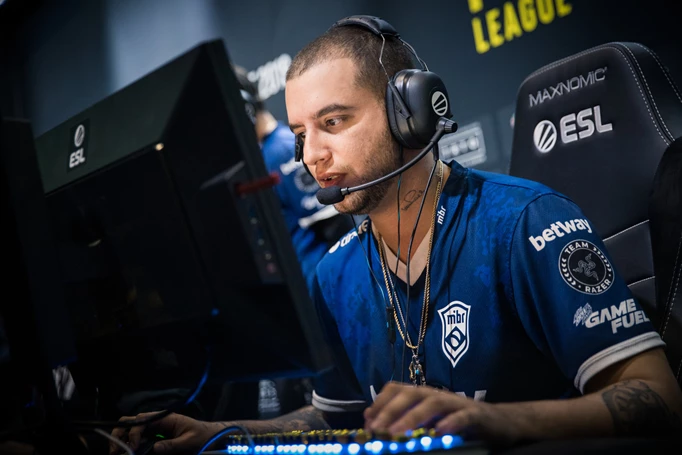
 Click to enlarge
Click to enlargeDissecting the MIBR Question
The other team stuck in a strange online purgatory is MIBR. MIBR played in both EPL and Flashpoint. They came fourth in EPL and got second at Flashpoint. The team has played fat better online than they did on LAN. On LAN, the team was underwhelming. Once CS went online however, the team started to play at a much higher level and were rounds away from winning Flashpoint.
This increase in performance puts the MIBR into a more complex situation. Prior to the online transition, a roster change seemed to be an obvious move as the team continued to decline. Since moving to online, MIBR are doing better than before. The question that MIBR needs to ask themselves is whether or not this growth can continue, whether it can transition to LAN play and the overall financial situation of the scene.
Unlike the Liquid situation, I think there are tangible factors we can look at for MIBR. In terms of growth, we need to look at the superstar talent and inferno. When we look at the potential growth of MIBR, we need to look at superstar talent as superstar talent generally decides the ceiling of a team when the system and tactics remain the same.
When I look at growth potential, I generally look at the superstar players as they generally decide the potential ceiling of how far a team can go. MIBR currently have three potential candidates: Gabriel “FalleN” Toledo, Fernando “fer” Alvarenga, and Vito “kNgV-” Giuseppe. All three players had periods where they were superstar players at an elite level. The problem with this thinking is that if you narrow the historical scope to the last two years, none of them have played at that level. Each of them have had certain games or series where they could play at that level, but none of them could do it consistently for a protracted period of time against the elite level.
Among the three, fer has been the best within the last two years. The inherent problem with fer is that his style is inherently volatile and feel based so it’s hard to build an entire system around that. To be fair, fer somehow pulled it off for all of 2017 and was probably the best player in Flashpoint.
As for KNgV-, I rated him as a top 20 player in the world. However due to his own actions, he was exiled from top play for a prolonged period of time and since returning to this level of CS, hasn’t been the same player he was back then. At the age of 27, it’s hard to think that he can make another resurgence at the top as a consistent star player, though it’s not technically impossible as Tomas “oskar” Stastny did it on Mouz during 2018.
FalleN is the third star we need to consider. I once wrote an entire article comparing what the difference was between Mathieu “ZywOo” Herbaut and Oleksandr “s1mple” Kostyliev and the fundamental conclusion I came to was that what made FalleN a great AWPer wasn’t his individual skill, but the advantage he had in-game knowledge. FalleN’s combat AWPing and superior tactical vision were one of the crucial pillars that let the Brazilians become the best in the world. As I’ve followed his career throughout the years, the times where FalleN has played at his best generally coincide with his game knowledge. The more he understands the strategic/tactical side of the game, the better he plays.
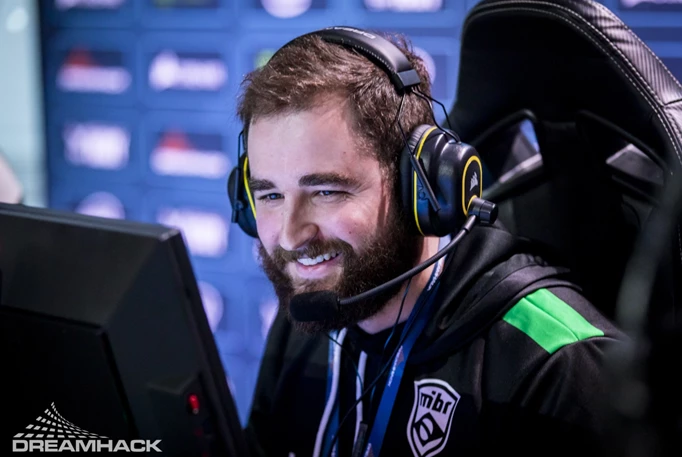
 Click to enlarge
Click to enlargeThis correlation seems to be holding with this MIBR squad. The better they play as a team, the more FalleN seems to be reviving his old form. As that’s the case, the crux of making FalleN the consistent superstar player is that he must have a team that buys into his system and that generally means sticking to a mostly national team (though we have yet to see whether or not FalleN could translate his style to English speaking EU players who have a different communication style from their NA counterparts). Inherently this means that if you want FalleN to be one of your stars, you must also buy into his system. However the last two years has been a steady decline of diminishing returns. It’s true that FalleN couldn’t get the players he wanted into the team, but that’s been the case for years and doesn’t seem likely to change. MIBR aren’t only deciding whether or not FalleN can be the star player, but also whether or not FalleN’s system can work even when hampered by the inability to get the players he wants.
MIBR needs to decide whether or not they think one of these three can become an elite superstar player. If MIBR thinks they can, they should stick it out. If they don’t think it’s possible, then they need to decide whether or not they should stick to FalleN’s system or pivot to an international lineup.
The second factor to look at is inferno. With Nuke being their permaban, MIBR have to make Inferno competitive enough to not be a liability. So far it’s been a mixed bag. They’ve won against teams like FURIA, 100 Thieves, and Orgless. On the other hand, they picked it into Mad Lions in the Flashpoint finals and lost.
As for the transition to LAN, no one can know for certain. The only thing that concerns me is how they failed to convert the final map on Train multiple times in the Flashpoint multiple times. For now we’ll have to note it and see if it happens again. As for the financial situation, we have to consider the economic downturn that was caused by the Covid pandemic. In the past buyouts were extremely high but with the pandemic coming in, it’s possible that teams will lower their buyouts for a cash influx they need to stay afloat now.
All things considered, MIBR’s success online has put them in a strange spot as they will have to decide whether or not they should make changes to this roster or stick it out until they can get back to LAN to see what happens. A final thing we need to look at is the Major. With the next Major being set in Brazil and the only Major in 2020 after a drought of LANs, the Rio Major is already setup to be one of the biggest Majors in CS:GO history. As that’s the case, MIBR must feel pressured to show up to the Major with a championship contender and that pressure could force changes in the team sooner rather than later.
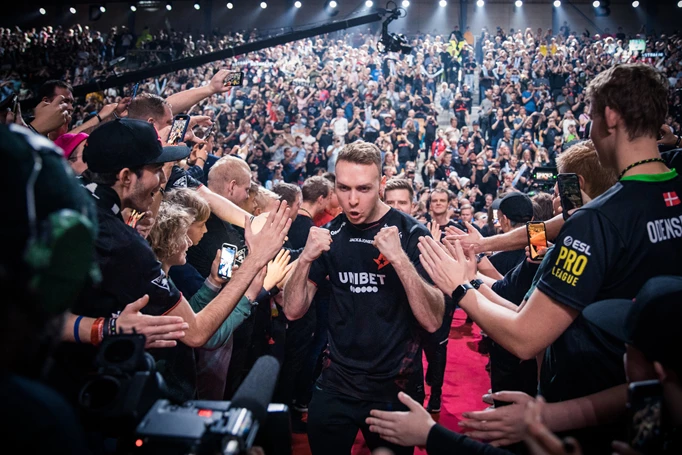
 Click to enlarge
Click to enlargeAstralis in purgatory
On paper, the two EU teams hurt by the pandemic the most are probably Astralis and Na`Vi. Astralis lost their edge in preparation and LAN experience while Na'Vi lost their firepower.
Between the two teams, Astralis is in a murkier position. They were the best team by the end of 2019, but have fallen off from that status in 2020. Mouz, Fnatic, and Na`Vi have all beaten Astralis at EPL EU 11. What’s more all three have beaten Astralis on LAN before: Fnatic at DreamHack Malmo, Mouz at EPL 10, and Na'Vi at Katowice.
Even with those losses, it’s hard to say that Astralis need to make a change in their roster. Among the three matchups, I think the only one that has a definitive edge against Astralis is Na'Vi. Na'Vi’s firepower and map pool make them a good match for Astralis. Outside of that, Astralis are either even with Mouz or slightly disadvantaged. As for Fnatic, I think Astralis still have the advantage against them. While Fnatic may have won in the last encounter, Astralis’ teamplay and tactics usually contains Fnatic which is why historically, they’ve had the edge against this Fnatic squad.
Holistically speaking, Astralis have two problems: their firepower is declining and teams have adjusted to the tactical/map pool changes they made in the last half of 2019. They are in a similar position to where they were at the beginning of 2019 and Astralis eventually reinvigorated themselves and solved both problems. The question we have to ask ourselves then is whether or not Astralis can do it again.
- Read More - ENCE sign Jamppi to Six-Man Roster
It seems doubtful that it could again be spite that kickstarts Astralis back into top form. Liquid had momentum in winning the IEM Grand Slam and were on the verge of making an era. Astralis, out of sheer spite, decided that they needed to deny Liquid glory. Peter “dupreeh” Rasmussen told readmore that, “The goal was to deny Liquid the Major.” dev1ce told HLTV, “My motivation is to knock Liquid off the top 1 spot.”
Spite is a hell of a motivator, but it needs a target to take down. Right now, there is no target, no clear number one team in the world that could rival what Astralis have done. What’s more, the Astralis organization is in a weird place as they are reducing salaries across the board, so the out of game issues could distract or affect the player performance in the game.
What’s more, while Astralis added a 6th man, I still can’t figure out a way that Patrick “es3tag” Hansen can improve the team beyond giving some players time off to deal with burnout. While Astralis have a lot of questions they need to answer if they want to become number one again, there are no obvious answers. They have the potential to resurrect again and as I’ve discussed in previous sections, their LAN experience in playoffs and the online format diminishes the edge Astralis had in preparation. For now, I suspect they will stick it out and see how the team performs once LAN season starts again as there is no obvious upgrade they can make to their squad.
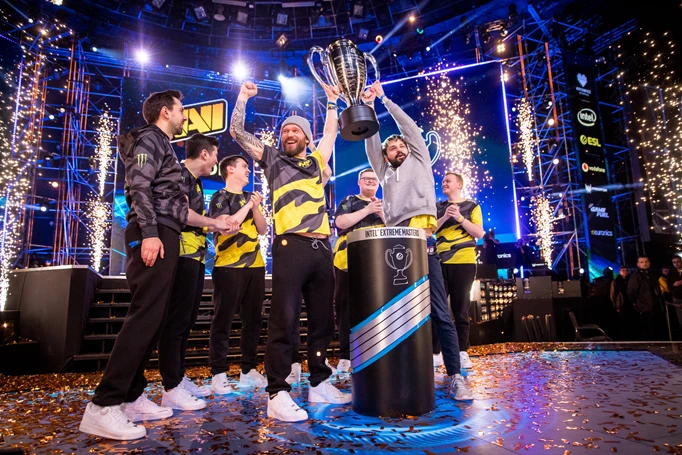
 Click to enlarge
Click to enlargeNa'Vi missing their window?
The final team to look at is Na'Vi. After winning IEM Katowice, many people predicted them to be the favourites to become the best team in the world. Unfortunately, the transition to online play has stalled out Na'Vi from taking advantage of their incredible form and firepower. While they are still contenders, online play will shorten their window and expose potential flaws in the team.
I’ve already gone over their strategic and tactical limitations in another article, so I won’t repeat myself here. Suffice to say teams can exploit Na'Vi both strategically and tactically and it’s unlikely that Na'Vi can improve in those areas. So for Na'Vi to win, they need to have more individual firepower. While that manifested on LAN, it hasn’t been as strong online. I’m sympathetic with Na'Vi to a degree as they are all young players in their early 20s so it’s probably harder to get them on the same page and in tune playing an online game compared to a LAN game even if the stakes are relatively similar. Even so, this is something that Na'Vi will have to deal with as their window to succeed will shorten as teams start to adapt to their playstyle and find disadvantages to exploit.
Purgatory of Indeterminate Length and the Major
Throughout this article, I’ve laid out the lingering questions caused by online play for Liquid, MIBR, Astralis, and Na'Vi. While I’ve focused on these four, all teams are affected by the transition to online play to some degree. With so many questions and a lack of LAN information, it would be easy for a team to fall into the trap of “wait and see”. The problem with that approach is that those who aren’t trying to improve their team are often the ones getting left behind.
While we are stuck in online purgatory, the competition continues. Teams that can find answers to these questions with the limited amount of information can get an advantage on their opponents and set themselves up for success.
I’ve pointed out that the economic situation could ease buyouts, but another thing to consider is the lack of LAN information and timing. With the LAN information gone, teams with strong management can use this chance to get a leg up on their opponents by solving their issues and getting their teams into a better position for months down the road.
The second thing to consider is timing. With the Major set for the end of the year, the decisions teams make during this online purgatory could have huge ramifications for how well teams do at the Major itself.
Images courtesy of DreamHack & ESL